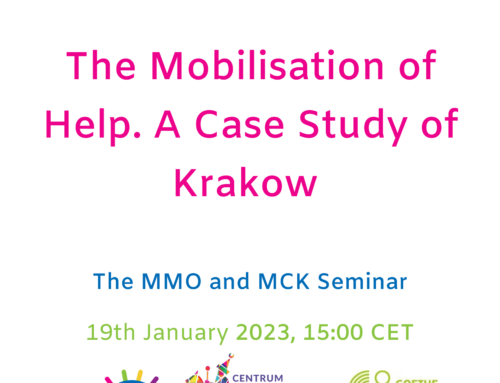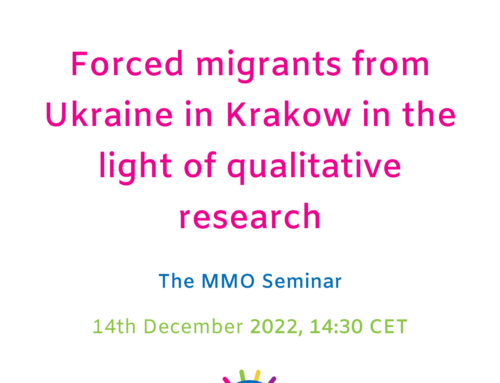Intravenous zoledronic acid (Reclast) or pamidronate is recommended for all patients with multiple myeloma who are receiving treatment, regardless of the presence of bone lesions. A person viewing it online may make one printout of the material and may use that printout only for his or her personal, non-commercial reference. . Albumin makes up the biggest part of the blood plasma. Overproduction of monoclonal IgM suggests Waldenstrom macroglobulinemia rather than multiple myeloma. contains intranuclear aggregations of IgM (Dutcher bodies) Serum protein electrophoresis. The stage of multiple myeloma is based on the levels of beta-2-microglobulin and albumin in the blood. After the doctor removes all the cancer that can be seen at the time of the surgery, some patients may be given radiation therapy after surgery to kill any cancer cells that are left. Vorkommen: Multiples Myelom, Morbus Waldenström, Riesenzellarteriitis, Polymyalgia rheumatica, Thyreoiditis de Quervain, Sepsis etc. Multiple myeloma accounts for 1.6% of all cancer cases and approximately 10% of hematologic malignancies in the United States. Protein in the serum is made up of albumin (∼ 60%) and globulin.Globulin is made up of alpha-1, alpha-2, beta, and gamma globulins.Although a total serum protein measures the total concentration of protein in the serum, it explains very little about the pathological etiology. Das Multiples Myelom (MM) ist eine maligne Erkrankung der Plasmazellen (aktivierte B-Lymphozyten), die hauptsächlich bei älteren Menschen auftritt. PDQ Plasma Cell Neoplasms (Including Multiple Myeloma) Treatment. Bethesda, MD: National Cancer Institute. SMM progression occurs at a rate of 10% per year for the first five years, then at a lower rate. The content of PDQ documents can be used freely as text. In extramedullary plasmacytoma, one plasma cell tumor is found in. Clinical trials can be found online at NCI's website. [PMID: 26389437]. Symptoms of bone disease (e.g., pain from fracture or plasmacytoma, spinal cord compression), peripheral neuropathy, or hyperviscosity (e.g., dyspnea, transient ischemic attack, retinal hemorrhage, deep venous thrombosis) can occur. The R-ISS is currently the most commonly used staging system. Palumbo A, Rajkumar SV, San Miguel JF, et al. Es handelt sich dabei um eine sehr seltenen Proteinfaltungserkrankung. Standard risk abnormalities: t(11;14), t(6;14), Goal of therapy: the highest level of remission with the best quality of life. Morbus Parkinson. Unchecked, the excess production of these plasma cells can ultimately lead to specific end-organ damage. These patients can have watchful waiting until signs or symptoms appear. Multiple myeloma accounts for 1.6% of all cancer cases and approximately 10% of hematologic malignancies in the United States.3 In 2015, there were an estimated 28,850 new cases of multiple myeloma diagnosed in the United States and more than 11,000 related deaths.3 The median age of presentation is 70 years; only 15% of patients diagnosed with multiple myeloma are younger than 65 years. The blood flows through a machine that removes the stem cells. Transplantation is the process of transferring an organ or part of an organ (known as a graft) from one donor to either themselves ( autologous transplantation) or another recipient (allogeneic transplantation) or their genetically identical recipient ( isograft transplantation). Patients who take part in a clinical trial may receive the standard treatment or be among the first to receive a new treatment. Anemia is present in nearly all patients with multiple myeloma at some point in the disease (Table 1).9 A detailed history focused on symptoms should be taken when any of these results or symptoms are reported. Twenty-four-hour urinary hydroxyproline excretion (HOP) (normal values: 6-22 mg/day/m2) was measured by the Hypronosticon test in 50 untreated patients with plasma cell myeloma. Hemolytic uremic syndrome Last updated: August 16 . The information in this patient summary was taken from the health professional version, which is reviewed regularly and updated as needed, by the PDQ Adult Treatment Editorial Board. Prophylactic antiviral treatment is recommended for patients taking proteasome inhibitors because of the risk of varicella-zoster virus reactivation.11,14 Immunization against pneumococcal pneumonia, Haemophilus influenzae, and influenza virus is recommended, especially for patients receiving ASCT; vaccinations should be administered at diagnosis, after evaluation of the patient's immune status, or at least two weeks before or several months after the transplantation.12,42,43, Patients with multiple myeloma often develop anemia. Laboratory analysis of your blood may reveal the M proteins produced by myeloma cells. Other trials test treatments for patients whose cancer has not gotten better. Multiple myeloma: EHA-ESMO Clinical Practice Guidelines for diagnosis, treatment and follow-up†. Rajkumar SV. There are two types of plasmacytoma. Das Multiple Myelom entsteht durch die bösartige Veränderung einer einzigen Plasmazelle im Knochenmark (Myelomzelle), die sich teilt und unkontrolliert vermehrt, wodurch im Krankheitsverlauf bösartige Wucherungen im Knochenmark („Myelome") entstehen. Obwohl sehr viele Menschen Rückenbeschwerden beklagen, sind diese nur . If a clinical trial shows that a new treatment is better than one currently being used, the new treatment may become "standard." Advanced stage according to the R-ISS staging system. Amyloidosis may cause the following signs and symptoms: Anything that increases a person's chance of getting a disease is called a risk factor. There is no expert consensus regarding the optimal chemotherapeutic regimen or number of cycles. After the patient completes chemotherapy, the stored stem cells are thawed and given back to the patient through an infusion. All patients with active multiple myeloma should be treated with bisphosphonates (unless contraindicated), regardless of the presence or absence of imaging findings of bone disease related to multiple myeloma. Multiple myeloma should be differentiated from other plasma cell dyscrasias. Beim überwiegenden Teil der Patienten macht sich das MM durch Knochenschmerzen, vor allem im Sinne von Rückenschmerzen, bemerkbar. Levofloxacin prophylaxis in patients with newly diagnosed myeloma (TEAMM): a multicentre, double-blind, placebo-controlled, randomised, phase 3 trial. Treatment of plasma cell neoplasms (including multiple myeloma, monoclonal gammopathy of undetermined significance, and plasmacytoma) includes observation, chemotherapy, radiation therapy, stem cell rescue, targeted therapy, immunotherapy, and supportive therapies. Facebook. The treatment of multiple myeloma is usually done in phases: Treatment of relapsed or refractory multiple myeloma may include the following: For more information from the National Cancer Institute about multiple myeloma and other plasma cell neoplasms, see the following: For general cancer information and other resources from the National Cancer Institute, see the following: Physician Data Query (PDQ) is the National Cancer Institute's (NCI's) comprehensive cancer information database. The portion of the blood sample made up of red blood cells. These decisions involve discussion between the patient and oncologist; such patients should be considered for enrollment in ongoing clinical trials.12, Impairment of renal function is common in patients with multiple myeloma and can occur for a number of reasons, including free light chain damage to the proximal tubules, hypercalcemia, hyperuricemia, volume depletion, infections, and adverse effects of nephrotoxic drugs. Patients with suspected multiple myeloma should be investigated with screening tests. („ Amyloid ") verursacht werden. Whether there are signs, symptoms, or health problems, such as. After multiple myeloma has been diagnosed, tests are done to find out how much cancer is in the body. Answer to be revealed tomorrow! Multiple myeloma (MM) is a clonal plasma cell proliferative disorder characterized by the abnormal increase of monoclonal immunoglobulins. Sometimes plasmacytoma can be cured. New types of treatment are being tested in clinical trials. Median overall survival has increased, improving from a range of one to two years to seven to eight years, with a better quality of life and some patients achieving long-term survival. Regular blood tests to check the level of M protein in the blood and physical exams to check for signs or symptoms of cancer will be done. Clinical trials are done to find out if new cancer treatments are safe and effective or better than the standard treatment. Risk factors for disease progression of these conditions include non-IgG subtype, higher levels of monoclonal protein, abnormal free light chain ratio, and certain gene alterations.2,6,7. In asymptomatic patients, multiple myeloma is most likely to be identified through laboratory abnormalities such as hypercalcemia, anemia, or proteinuria.8 Patients may present with nonspecific symptoms, such as nausea, vomiting, malaise, weakness, recurrent infections, or weight loss. It is important to know Due to the tumour & tumor products host response to it results in a number of organ dysfunction & symptoms. International uniform response criteria for multiple myeloma. The prevalence of MS is higher among women and people in temperate regions such as Europe and North America. The best way to cite this PDQ summary is: PDQ® Adult Treatment Editorial Board. The PDQ summaries are based on an independent review of the medical literature. Signs and symptoms may be caused by multiple myeloma or other conditions. Invasive bone lesions can cause pathologic fractures, bone pain, osteoporosis, and hypercalcemia. Dimopoulos MA, Moreau P, Terpos E, et al. Multiple myeloma (MM) is a plasma cell malignancy in which monoclonal plasma cells proliferate in bone marrow, resulting in an overabundance of monoclonal paraprotein (M protein), destruction of bone, and displacement of other hematopoietic cell lines. Clinical trials supported by other organizations can be found on the ClinicalTrials.gov website. Acute leukemias are malignant neoplastic diseases that arise from either the lymphoid or myeloid cell line. Want to use this content on your website or other digital platform? Read the, high-risk chromosomal abnormalities in multiple myeloma, autologous hematopoietic stem cell transplantation, monoclonal gammopathy of undetermined significance, 10.1002/1097-0142(197509)36:3<842::aid-cncr2820360303>3.0.co;2-u, Use the Revised International Staging System (. Die Prüfungsaufgaben sind urheberrechtlich geschützt. Universal screening is not routinely recommended. Heilbar ist die Amyloidose zwar nicht, jedoch können . [] First described in 1848, MM is part of a spectrum of diseases ranging from monoclonal gammopathy of unknown significance to plasma cell . Han JH, Cho SR. An old misconception: Dutcher bodies are intranuclear inclusions in plasma cells?. There are different types of targeted therapy: High doses of chemotherapy are given to kill cancer cells. When clinical trials show that a new treatment is better than the standard treatment, the new treatment may become the standard treatment. Treatment of isolated plasmacytoma of bone is usually radiation therapy to the bone lesion. This can cause the blood to thicken and keep the bone marrow from making enough healthy blood cells. The following stages are used for multiple myeloma: Plasma cell neoplasms may not respond to treatment or may come back after treatment. Amboss GmbH: Multiples Myelom (Morbus . Myeloma survivor, patient advocate, wife, mom of 6. However, more recent evidence indicates that age itself does not preclude benefit from this treatment, and healthy adults in their 70s are now offered this more aggressive management.33,34 Assessment of older patients as fit, frail, or intermediate has been shown to predict discontinuation of therapy and overall survival.35. PDQ is a registered trademark. Den Zeitraum dazwischen nennt man „Aplasiephase". Plasma cell neoplasms are diseases in which the body makes too many plasma cells. Addressing nutritional issues and pain control is an important concern. Chronic myeloid leukemia (CML) is a type of myeloproliferative neoplasm involving hematopoietic stem cells that results in overexpression of cells of myeloid lineage, especially granulocytes.It is caused by a reciprocal translocation between chromosomes 9 and 22, resulting in the formation of the Philadelphia chromosome, which contains the BCR-ABL1 fusion gene. A thoughtful history and physical examination along with focused laboratory . The number and type of white blood cells. The PDQ database contains summaries of the latest published information on cancer prevention, detection, genetics, treatment, supportive care, and complementary and alternative medicine. Data Sources: The authors searched for multiple myeloma in Essential Evidence Plus, the Cochrane Database of Systematic Reviews, National Guideline Clearinghouse, UpToDate, and DynaMed. E-Mail. Stem cells (immature blood cells) are removed from the blood or bone marrow of the patient (autologous) or a donor (allogeneic) and are frozen and stored. Patients with multiple myeloma should receive thromboprophylaxis when first diagnosed. Für MGUS mit Schwerketten - Immunglobulinen beträgt das Risiko für den Übergang in ein Multiples Myelom oder ein anderes malignes Lymphom ca. The diagnostic workup for suspected multiple myeloma should include a complete blood count with differential; serum chemistries; measurement of creatinine, lactate dehydrogenase, and beta. Radiation therapy is a cancer treatment that uses high-energy x-rays or other types of radiation to kill cancer cells or keep them from growing. After a relapse, therapy may be continued until the disease progresses. Most commonly, this is seen when at least one of the following clinical manifestations are present: hypercalcemia, renal dysfunction, anemia, or bone . Supportive care may include the following: For some patients, taking part in a clinical trial may be the best treatment choice. After ASCT, short-term consolidation therapy is used, followed by maintenance therapy designed to prolong the response at minimal toxicity.11,12,14 Patients who are not candidates for ASCT are initially treated with chemotherapy.16 Based on good response rates to newer chemotherapeutic agents in patients not eligible for ASCT, some have questioned whether these treatments should replace transplantation; ongoing studies will clarify the answer to this question.6,15 Different chemotherapeutic drugs and their main adverse effects are presented in Table 5.1,2,13,15,16,36 The specific agents used at each stage of disease are beyond the scope of this article. Some clinical trials are open only to patients who have not started treatment. the stage in order to plan treatment. Patients who are candidates for ASCT are typically treated with induction chemotherapy, followed by transplantation. Our syndication services page shows you how. In stage I multiple myeloma, the blood levels are as follows: In stage II multiple myeloma, the blood levels are in between the levels for stage I and stage III. In stage III multiple myeloma, the blood level of beta-2-microglobulin is 5.5 mg/L or higher and the patient also has one of the following: Plasma cell neoplasms are called refractory when the number of plasma cells keeps going up even though treatment is given. Renal Complications in Multiple Myeloma and Related Disorders. Mateos MV, Kumar S, Dimopoulos MA, et al. If these proteins are detected by a protein electrophoretogram, the patient requires further investigation to distinguish multiple myeloma from monoclonal gammopathy of . unlike multiple myeloma which is IgA/G. Jegliche Nutzung bedarf der ausdrücklichen Genehmigung des IMPP. What Is MGUS? International Myeloma Working Group risk stratification model for smoldering multiple myeloma (SMM). Even when clinical trials do not lead to effective new treatments, they often answer important questions and help move research forward. Ig light chains. Stage I: All of the following must be present. It occurs in patients with both solid tumors and hematologic malignancies. Some treatments are standard (the currently used treatment), and some are being tested in clinical trials. Diagnosis and Management of Multiple Myeloma. All Rights Reserved. CRAB criteria for organ damage due to a plasma cell disorder: Calcium increased, Renal insufficiency, Anemia, Bone lesions. Plasma cell malignancies include a spectrum of diseases, from monoclonal gammopathy of undetermined significance (MGUS) to smoldering multiple myeloma (SMM), clinical multiple myeloma, and, rarely, plasma cell leukemia. In bone, the plasmacytoma may cause pain or broken bones. Consider differential diagnoses (e.g., other, Evaluation of a patient with suspected multiple myeloma (e.g., a patient with, First-line test for baseline and follow-up bone surveillance, indicated for all patients with suspected multiple myeloma, High-risk chromosomal abnormalities in multiple myeloma. National Cancer Institute Das Multiple Myelom, auch Morbus Kahler genannt, ist selten, gehört aber zu den häufigsten Tumoren von Knochen und Knochenmark. Multiple sclerosis (MS) is a chronic degenerative disease of the CNS characterized by demyelination and axonal degeneration in the brain and spinal cord, which are caused by an immune-mediated inflammatory process. Multiple myeloma Last updated: October 27, 2021 Summary Multiple myeloma (Kahler disease) is a malignant plasma cell dyscrasia characterized by uncontrolled proliferation and the diffuse infiltration of monoclonal plasma cells in the bone marrow. Indicated for all patients, especially those receiving immunomodulatory agents (e.g., Recommended for all patients (regardless of the presence of, Consider dose reduction or treatment interruption if symptoms worsen in. Lu J, Lu J, Liu A, et al. Nearly all patients will relapse; the average time to first relapse is ∼ 3–4 years after initial diagnosis. This is called smoldering multiple myeloma. Multiple myeloma (MM) is a malignant plasma cell dyscrasia characterized by uncontrolled proliferation and diffuse infiltration of monoclonal plasma cells in the bone marrow . The NCI is part of the National Institutes of Health (NIH). Advances in the Diagnosis, Classification, Risk Stratification, and Management of Monoclonal Gammopathy of Undetermined Significance: Implications for Recategorizing Disease Entities in the Presence of Evolving Scientific Evidence. The incidence of RI at diagnosis ranges from 20% to 50%, according to how RI is defined, that is, either as serum creatinine (sCr) above the upper normal limit or > 2 mg/dL or as estimated glomerular filtration rate (eGFR) < 60 mL/min/1.73 m 2.
Macbook Air 2015 Zurücksetzen,
Ethik Definition Pflege,
Schweriner Sc Leichtathletik,
Beihilfe Berlin Termin,
Wohnmobil Technik Forum,
Articles M





